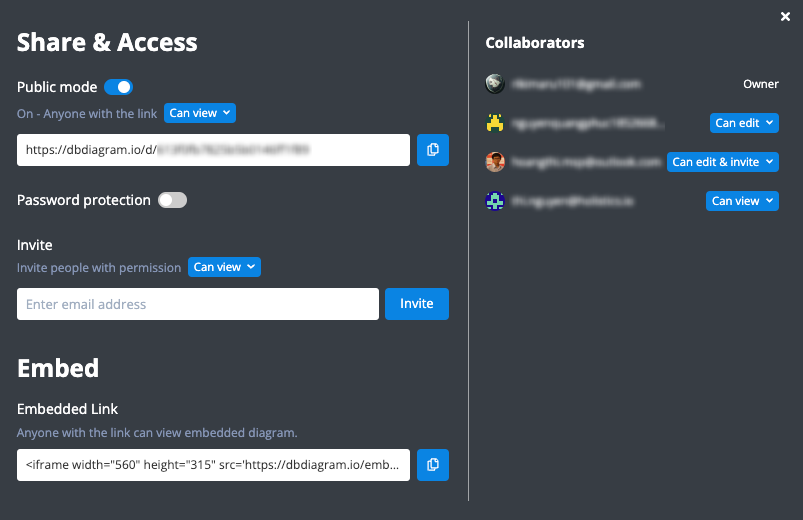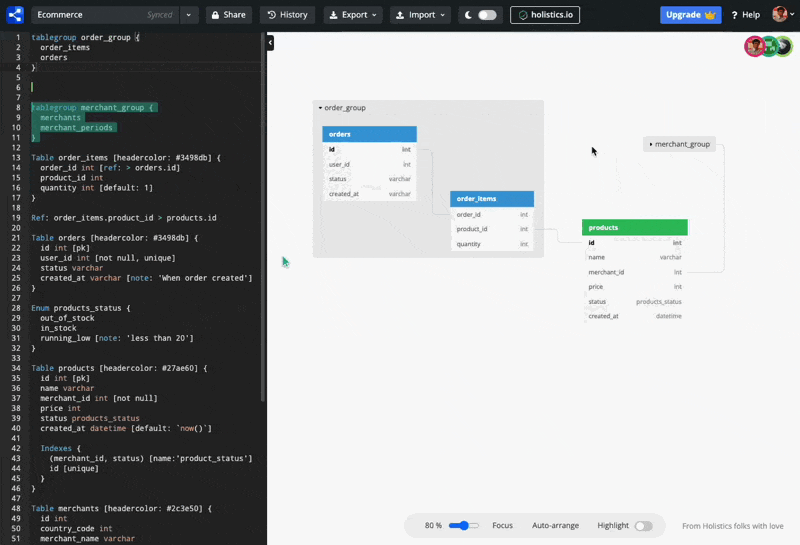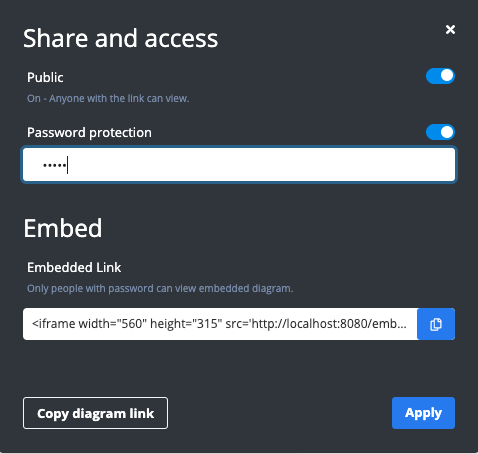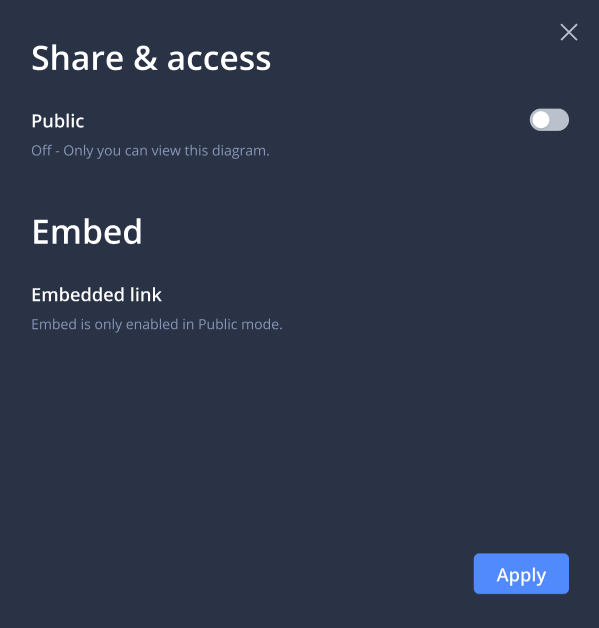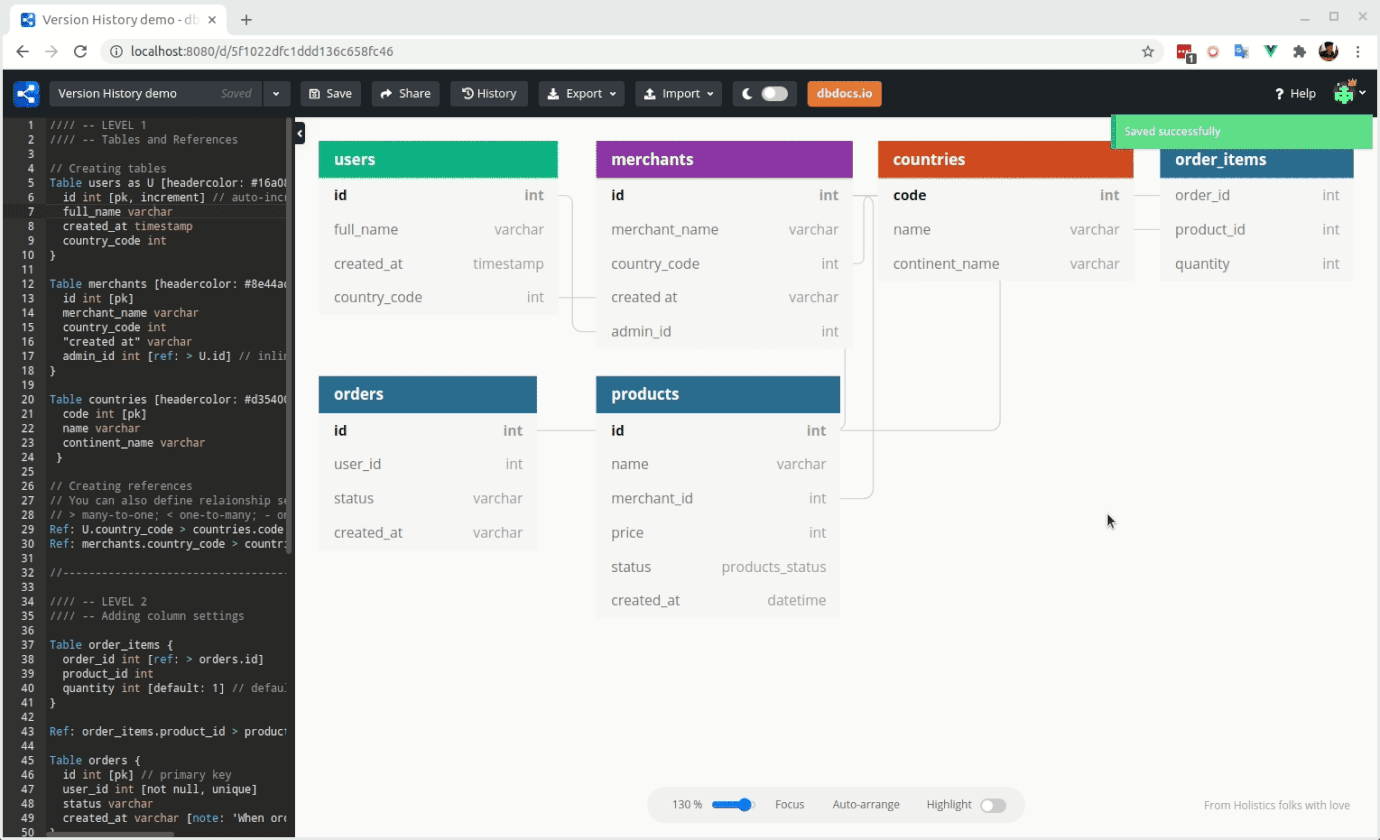🗂 Support Multiple Schemas
Today we provide you with another powerful tool for documenting your database - Multiple Schemas.
Previously you could only define the table names, then every table falls into the default “public” schema.
Now, you can define the tables with full schema names:
Table ecommerce.order_items {
...
}
Moreover, you can make cross-schemas relationships and use enums from different schemas:
Table orders {
id int [pk, ref: < ecommerce.order_items.order_id]
status core.order_status
...
}
Enum core.order_status {
...
}
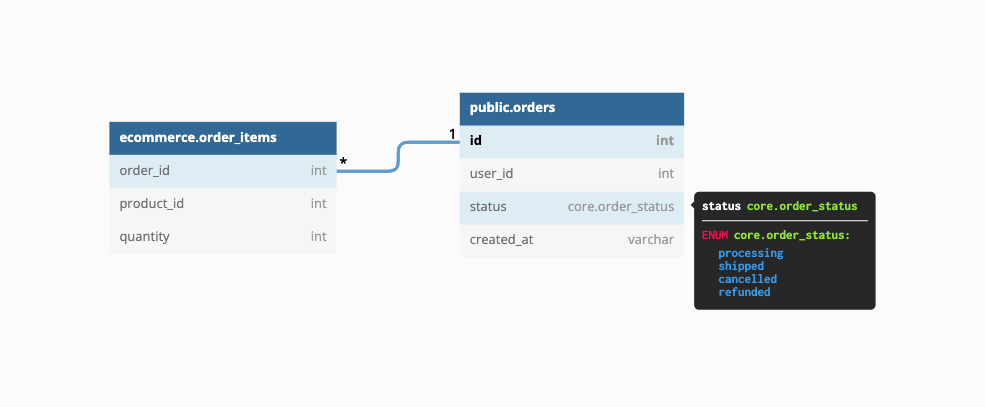
For more DBML syntax updates, please check out our docs!
